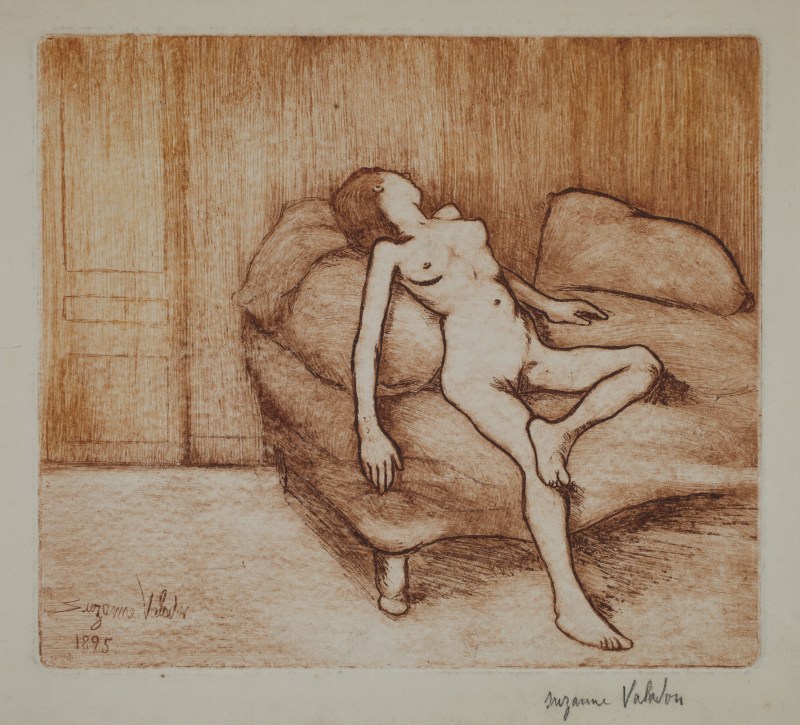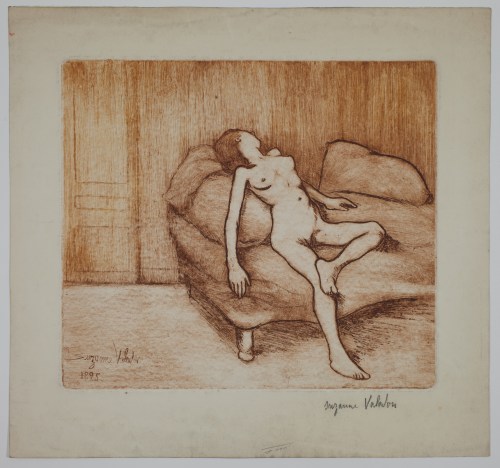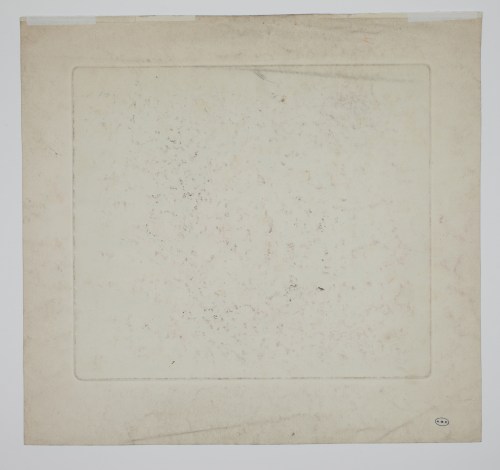Suzanne VALADON: Louise nue sur le canapé - 1895
SOLD
[Louise naked on the sofa]
Soft ground etching, 248 x 284 mm. Petrides E4.
Impression exceptionally printed with monotype colouring in brown and ginger.
Superb impression printed on wove paper, signed in pencil bottom right suzanne Valadon. Generally in very good condition. Wide margins (sheet: 339 x 362 mm).
Provenance: Henri Marie Petiet (1894-1980), publisher, bookseller and dealer in prints and drawings. Stamp H.M.P. in an oval printed on the reverse: “The stamp, consisting of the initials of Baron Henri Marie Petiet in an oval, was created after his death to mark on the reverse the prints in his collection as they were offered for public sale.” (Lugt 5031)
An impression is said to be 'monotype' when it is printed from an unetched copperplate on which the artist painted directly, so that it is impossible to print a second identical impression. Our impression is 'printed with monotype' because Valadon painted the colours directly onto the etched copperplate for Louise nue sur le canapé: as a result, this impression is unique.
Suzanne Valadon learned soft ground etching with Degas around 1895. She etched several plates, including Louise nue sur le canapé (1895), Catherine nue se coiffant [Catherine, Naked, Combing Her Hair] (1895), Nue sur un divan [Nude on a Sofa] (1896).
Suzanne Valadon printed an impression with monotype colouring of several soft ground etchings: Louise nue sur le canapé (1895), Catherine nue se coiffant (1895), Nue sur un divan (1896), Ketty s’étirant [Ketty stretching] (1904), Adèle préparant le tub et Ketty aux bras levés [Adèle Getting The Bathtub Ready and Ketty With Her Arms Raised] (1905), Catherine s’épongeant [Catherine Drying Herself] (1908).
Despite the diversity of techniques used by Valadon, her engraved work presents a great unity: "Of the subjects of her plates, quite close to each other, Valadon herself decided the titles. The setting? Any ordinary room where familiar models – mothers and grandmothers, children, servants – go about doing housework. [...] Servants dry themselves, comb their hair, stretch before Suzanne, as before Renoir, voluntary models who have been made grander by her, for she always excels in describing the form not in pieces but in its brilliant unity." (Claude Roger-Marx, "L'œuvre gravé de Suzanne Valadon" in 18 planches originales de Suzanne Valadon gravées de 1895 à 1910, translated by us). Roger-Marx underlines Suzanne Valadon's rigour and sobriety. Without idealizing the bodies, without falling into sentimentality or pathos, she gives an account of the body in its daily activity, alternately wearying or stimulating: "it is always through the stoicism of the line that she is sure to move us".





